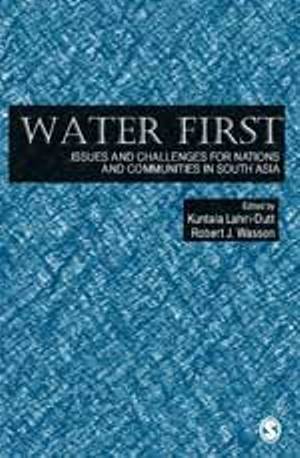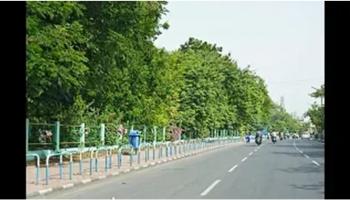/topics/water-management
Water Management
Blog action day -- Water and poverty
Posted on 15 Oct, 2008 10:24 PMToday is Blog Action Day 2008, where blogs all over the world are writing about poverty. We thought we would use this opportunity to talk about water and poverty.
Source South Asia Water & Sanitation News:Issue 8 (30 Sep 08)
Posted on 13 Oct, 2008 09:26 PM Since its foundation in 1968, the IRC International Water and Sanitation Centre (IRC) has facilitated the sharing, promotion and use of knowledge so that governments, professionals and organisations can better suppo
Since its foundation in 1968, the IRC International Water and Sanitation Centre (IRC) has facilitated the sharing, promotion and use of knowledge so that governments, professionals and organisations can better suppo
World Water Week 2008 : Recap
Posted on 09 Oct, 2008 09:23 AMThe World Water Week concluded at Stockholm on August 23rd. with 2400 scientists, leaders and various representatives from more than 100 countries. Action is crucial, stakes are high and time is running out, were the key messages coming from the World Water Week (August 17th - 23rd). The focal points throughout were sanitation and hygiene, climate, water management, ecosystems and business issues. Studies, reports, initiatives and announcements made during the week included: Water, Agriculture and Bioenergy: http://www.worldwaterweek.org/Downloads/2008/Water_Agriculture_Bioenergy.pdf Water Resource Management: http://www.worldwaterweek.org/Downloads/2008/Water_Resource_Management.pdf Climate and Water: http://www.worldwaterweek.org/Downloads/2008/Climate_and_Water.pdf Water Economics, Finance and the Private Sector: http://www.worldwaterweek.org/Downloads/2008/Economics_Finance_and_the_Private_Sector.pdf Ecosystems and Biodiversity: http://www.worldwaterweek.org/Downloads/2008/Ecosystems_and_Biodiversity.pdf Transboundary Waters: http://www.worldwaterweek.org/Downloads/2008/Transboundary_Waters.pdf Water in Asia: http://www.worldwaterweek.org/Downloads/2008/Water_in_Asia.pdf
WASSAN: Watershed Cartoons!
Posted on 08 Oct, 2008 08:58 AMThese PROTOONS were produced as part of various engagements of WASSAN with Watershed Development projects and Rainfed Agriculture. DFID I; Commissionerate of Rural Development (GoAP); Ford Foundation; HIVOS; District Water Management Agencies; Mandal Mahila Samakhyas; various NGOs, Resource persons, villagers and several others contributed in developing these PROTOONS.
"Small Towns in a Booming Economy"
Posted on 08 Oct, 2008 06:35 AMSunita Nadhamuni is CEO of Arghyam Trust in Bangalore/Bengaluru, (www.arghyam.org), which is the organisation that manages the India Water Portal.
FLOW, the film
Posted on 29 Sep, 2008 07:15 PMThese facts may surprise you: 1.1 billion people live without clean drinking water.* There are over 116,000 human-made chemicals that are finding their way into public water supply systems.* Water is a $400 billion dollar global industry; the third largest behind electricity and oil.* Flow, a new film about the implications of the world water crisis, can help you wrap your head around those dis
Book shelf : "Water First: Issues and Challenges for Nations and Communities in South Asia" by Kuntala Lahiri-Dutt and Robert J Wasson
Posted on 29 Sep, 2008 10:11 AM This book brings together current knowledge and cutting edge interdisciplinary perspectives from renowned scholars on the histories, politi
This book brings together current knowledge and cutting edge interdisciplinary perspectives from renowned scholars on the histories, politi
Quick and easy: SODIS and Nimbu Pani for potable water
Posted on 26 Sep, 2008 05:57 AMHere is a slightly long and complex paper but the sum and substance of it seems to be that Solar Disinfection (SODIS) combined with Nimbu pani is excellent to reduce e-coli count and inactivate it substantially. Nimbu paani also serves as an indicator that the water has been SODISED.
Anatomy of a flood: The case of Kosi in 2008
Posted on 25 Sep, 2008 09:24 AMMore than 17 million people have been affected in India, Bangladesh and Nepal by the recent floods in South Asia. Around 3 million people have been rendered homeless and more than one million are now living in relief camps.







